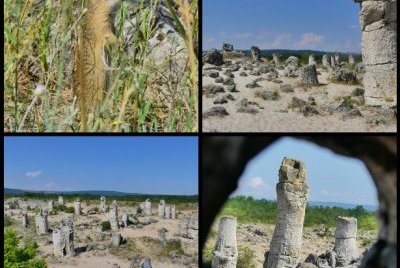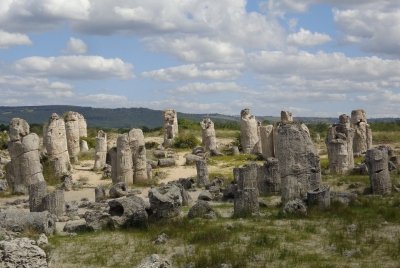Bulgaria
Pobiti Kamani Natural Monument
Site Info
Official Information
- Full Name
- Pobiti Kamani Natural Monument (ID: 5642)
- Country
- Bulgaria
- Status
-
On tentative list 2011
Site history
History of Pobiti Kamani Natural Monument
- 2011: Added to Tentative List
- Added to tentative list
- Type
- Natural
- Criteria
Links
- UNESCO
- whc.unesco.org
All Links
UNESCO.org
- whc.unesco.org — whc.unesco.org
Community Information
- Community Category
- Natural landscape: Eroded
Travel Information
Recent Connections
News
No news.
Recent Visitors
Visitors of Pobiti Kamani Natural Monument
- Alexander Lehmann
- Argo
- Cezar Grozavu
- Clyde
- Dimitar Krastev
- Els Slots
- Erik Jelinek
- George Gdanski
- Hadrianus
- Hubert
- Igloo
- Jasam
- Joel on the Road
- John Smaranda
- Jonas Kremer
- jonathanfr
- Justin Rickey
- Lisu Marian
- Maciej Gil
- Mateusz
- Mathijs
- Mihai Dascalu
- nan
- Peter Lööv
- Philipp Peterer
- Randi Thomsen
- Roman Bruehwiler
- Schnitzel
- Shandos Cleaver
- Stanimir
- Stanislaw Warwas
- Svein Elias
- Szucs Tamas
- Tamara Ratz
- Tarquinio_Superbo
- Thomas Buechler
- Thomas van der Walt
- Tsunami
Community Reviews
Show full reviews
I visited this tWHS as a pleasant detour after visiting the Madara Rider WHS. Although there is a parking lot hidden just behind the site proper, it didn't feel safe at all to leave my car there so I decided to park my car in the very wide shoulder of the main road (as did most other local cars). The main road passes right through the pretty natural landscape and there are very minor limestone formations also on the other side of the road although the beware of snakes sign and the overgrown grass made me just watch from a distance.
The natural monument landscape on the other side is really beautiful to explore. It is quite strange to explore what now looks like a desert landscape in the middle of never-ending sunflower fields (a very ugly looking industrial scale facility is the only eyesore around apart from the main road itself). It has been also dubbed as a "stone forest". The limestone formations are actually tubular stone pillars which formed around "rising methane-bearing fluid plumes". These desert rock formations are believed to represent an exceptional record of paleo-hydrocarbon seep system. The pathways of fluid circulation are recorded as columns set in sand, producing a desert-like landscape. Apart from the geological importance of the natural monument, Pobiti Kamani is also considered to emanate some sort of cosmic energy.
The Pobiti Kamani Natural Monument occupies an area 8 km long and 3 km wide, with seven groups of stone …
Keep reading 0 comments
Several areas with “standing stones” (Pobiti Kamani in Bulgarian) can be found immediately West of Varna city. The main area of interest is easily accessible by car and can be visited (at least there is a car park and a ticket office). It can be reached via the national road or via the highway (there is an exit from the highway in the immediate area of the site). Coming from Varna, the national road goes through the area of interest, so you cannot miss it. Car park is immediately after, on the left side of the road (beware, when we visited it August 2018, entrance of the car park was not signed).
Some stones are up to 5 meters high. Some are grouped, some stand alone. Some have fallen. Most of these stones are hollow columns, so they would better be described as tubes. Their immediate environment is quite like a small desert: be prepared to walk on sand. Flora is different as well. There is almost no management of the site, unfortunately, so visitors can walk on the plants, and we even saw some people climbing on stones.
The main question is about the origin of these “standing stones”. Ticket office at the entrance of the site has information panels (in several languages including English) listing different hypothesis. What is for sure is their natural origin. Some believe they are the result of erosion of sedimentation layers, formed at the bottom of the sea. Some believe …
Keep reading 0 comments
